In looking for artists to include in my personal anthology for English, I came upon Carol Grigg. She is a Cherokee painter from Oregon, and I love the way she uses watercolors. She manipulates the watermark in such a way that provides for tremendous texture and movement in her work. I also like the way that she uses negative space in many of her compositions to create drama and suspense. The clean outside edges and distinct defining lines of many of her figures juxtaposed to the fuzzy washes of color within them gives her work an intriguing rhythm that I am drawn to--a constant shifting of soft to sharp, a satisfying balance of spontaneity and control.
|
The beautiful Spring day called for a walking field-trip! Despite the fact I was running on a about an hour and a half of sleep, it still managed to be another great one. First stop was a student exhibition center on the VCU campus. Unfortunately, I only have one picture from the craft exhibit. This picture features a sculpture of a tall wood block with a jumble of wire and a couple of bricks at the top. At the bottom, among a few other bricks, is what looks to be a deformed teapot. I think I was drawn to the sculpture because of its use of natural elements--wood, earth, metal. However, these elements are not depicted in their natural forms, but instead in the way that humans manufacture them in order to build and construct--hence the wires, the bricks, and the wooden beam. I now look at this piece, seemingly simple at first glance, and see a statement about the foundations of our society--the building blocks that we produce in mass quantities to serve as structure for our constructs. Though the structure may collapse, the building blocks remain. This work has inspired me not only to use a variety of natural elements in my own sculpture, but has also shown me the the powerful message a collection of found objects can convey through their unique composition. At the 1708 Gallery, Andrew Kozlowski provokes similar questions in his exhibit "After the Party". I felt the exhibit as a whole to be very chaotic and overwhelming. Though it did not appeal to me on a superficial level, I think the chaos was intentional on Kozlowki's behalf. Not only did he have to consider the composition of each piece of work, but he had to carefully take into account the composition of the whole room. He uses the space in away that really emphasizes how modern man scatters his many belongings. He takes the saying "leaving a trail" to a whole other level by making a mountain out of his prints of our everyday items. After 1708 Gallery, we go the chance to stop by Quirk for a short while. There, I was most intrigued by the work of Amy Rice. The body of work she had on display included multiple paintings of birds and flowers. I really enjoy how she paints on top of maps and other documents. I believe that now I am more likely to consider my canvas or the surface that I plan to work on just as much as the work itself. Painting on unique surfaces provides her content with interesting textures and also gives depth to pieces that would otherwise seem a little flat. 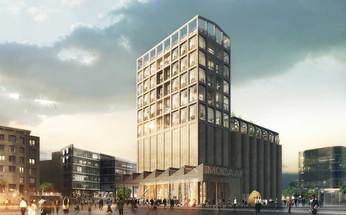 http://www.theartnewspaper.com/articles/Thomas-Heatherwick http://www.theartnewspaper.com/articles/Thomas-Heatherwick British designer Thomas Heatherwick was selected to convert a 1920's granary in Cape Town, Africa into the Zeitz Museum of Contemporary Art Africa (Zeitz MoCAA). The granary consist of 42 silos The MoCAA is scheduled to open in the later part 2016. The museum will include 80 galleries, 18 education rooms, and a rooftop sculpture garden. Heatherwick has never designed a museum, but his designs have been featured in the 2012 London Olympics as well as the 2010 Shanghai World Expo. “Unlike many conversions of historic buildings which have grand spaces ready to be re-purposed, this building has none. “Rather than strip out the evidence of the building’s industrial heritage, we wanted to find a way to enjoy and celebrate it. We could either fight a building made of concrete tubes or enjoy its tube-iness,” commented Heatherwick about the challenge of preservation and practicality. I like the idea of converting something old and no longer in use to something new and practical. I admire Heatherwick's intentions to preserve the historical essence of the build, for I think making that effort will add a unique layered quality to the design of the museum. In reading this article and thinking of ideas for this marking period's home project, I have thought about mingling old to make new. What exactly that entails--well, I haven't gotten there yet. 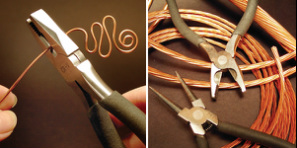 http://wireinspire.com/about-wire/ http://wireinspire.com/about-wire/ So far I've only been to two of the metal-smithing workshops at the Visual Arts Center. During the first class we learned about the different tools and types of metal we would be handling. After watching a slide show of metal sculpture we started our own wire sculptures. Essentially, we were 'drawing' with wire. I never really thought about it that way until sitting in the class and looking at the examples. The ironic thing is that many of the examples looked like attempts to make the sculptures appear as sketches of sort, while we try to make our drawings appear 3-dimensional. 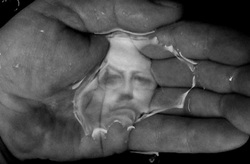 Oscar Muñoz is a Popayan from Colombia. In 1971, he graduated from the Escuela de Bellas Artes of Cali, and he continues to live and work there. He is known thought of as one of the most influential contemporary artists to come out of Colombia, and he is admired by many for his use of a wide range of mediums. Among his artistic disciplines are photography, film-making, printmaking, drawing, and sculpting. His work relates to the cycle of life, and also dwells in the concept of memories and their ephemeral natures. "Often, these images are created using unusual and unstable materials such as human breath, water, light, wax, and dust as ways of calling attention to the precarious nature of human life, narcissism, and altruism." In March, The Visual Art Center will open his exhibition "Imprints for a Fleeting Memorial". The show will consist of several of his multimedia pieces and 28-minute video titled "Re/Trato". "Re/trato," meaning literally "portrait" and "I try again," shows the incessant drawing and redrawing of an elusive self-portrait. The image is drawn with water on a concrete slab in intense sunlight, so that the marks begin to disappear as soon as they are drawn. "Re/trato" is profound in its visual, conceptual and technical depth while embarking deeply emotional and universal territory — the loss of a loved one, the loss of memory and the more philosophical loss of self. Articles: http://www.styleweekly.com/richmond/time-out/Content?oid=1664352 http://www.sicardi.com/artists/oscar-muoz/artists-artist-works# 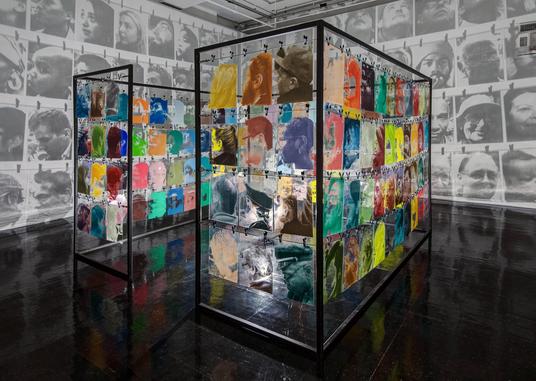 http://www.commonwealthtimes.org/2013/11/18/art-professor-displays-neighbors-at-anderson-gallery/ http://www.commonwealthtimes.org/2013/11/18/art-professor-displays-neighbors-at-anderson-gallery/ I really appreciated the variety of art we saw at Anderson Gallery. Each exhibit was different in its presentation, but at the same time all worked as powerful tools to convey messages about the human condition. The work of Buhyon Yoon, Nancy Spero, and Jime Yoon all exemplified, if not emphasized, the true power of art beyond its aesthetic beauty. The piece by Buhyon Yoon, entitled 'Neighbors' was a fascinating work in that it incorporated multiple sensory facets--by breaking down and layering light, sound, and shadow to almost recreate the spirit of a community. What I enjoy most about Yoon's work is that his choice of media plays just as great of role as his imagery in communicating his message about people and diversity. 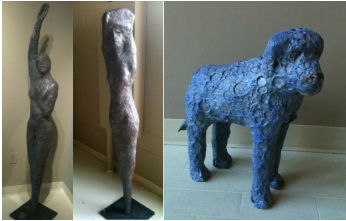 Source: http://www.glavekocengallery.com Source: http://www.glavekocengallery.com When we walked passed the Glave Kocen Gallery I was automatically drawn to the statues showcased in the window. At first glance I thought the organic figures were made out of an oxidized metal. Once I asked the curator about them, I learned that the statues were actually ceramic pieces made by Mark Chatterley, a local artist. She also explained to me that he created the unusual exterior texture by using a crater glaze. This experienced inspired me to explore new media, and it also reinforced the importance of inquiry. 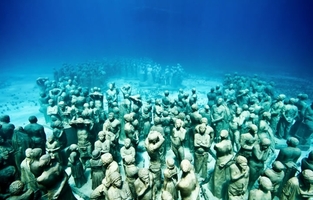 Source: http://www.balcanexpres.com Source: http://www.balcanexpres.com Link to article: Cancún Journal- Trying to Protect a Reef With an Otherworldly Diversion This underwater museum is an incredible example of art being used to make a difference! The best part though, for me, is that Jason deCaires Taylor creates these statutes after people in his own town. Imagine having a statue of yourself submerged in the ocean. I enjoy the fact that he defies the ordinary to make a statement about our connection with the unknown world. “Foremost, it’s an opportunity to view this other world,” Mr. Taylor said. “We are surrounded by water, but people have no understanding what their planet is. It helps see ourselves as part of the world.” I guess I should get on that SCUBA certification if I'm to visit the Museo Subacuático de Arte. |
AuthorMLWGS Art III student Archives
April 2014
Categories |
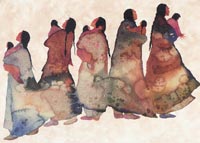
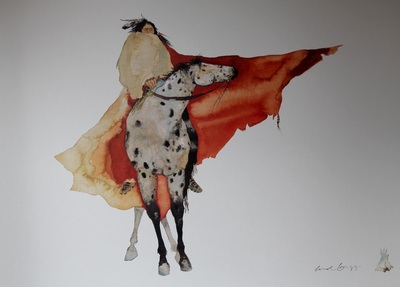
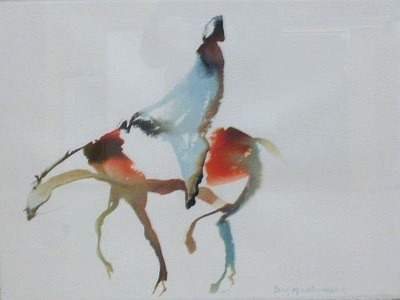
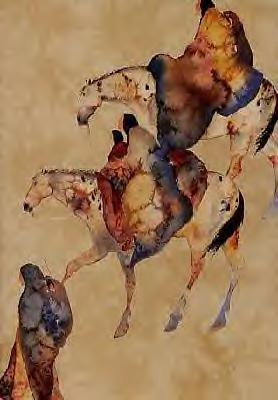
 RSS Feed
RSS Feed
